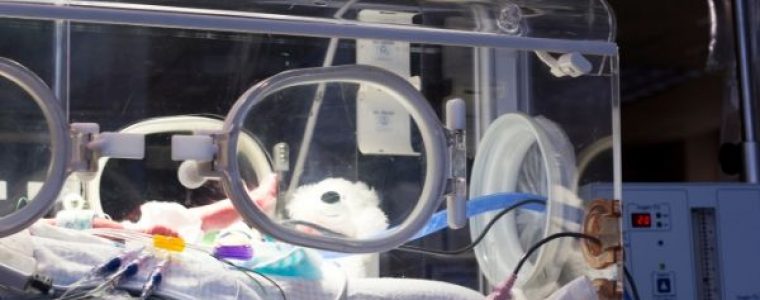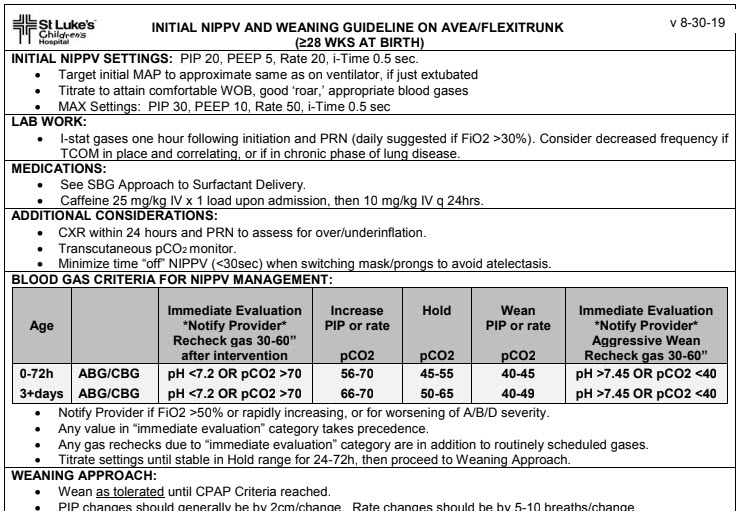CLINICAL GUIDELINES |
Respiratory Management
Purpose:
A guideline for the management of noninvasive positive pressure ventilation using the Avea ventilator. It provides suggested initial settings, maximum tolerable settings, blood gas criteria, and suggested approaches to weaning and transitioning to other forms of noninvasive support.

The guideline also provides suggested criteria for failure of extubation and indications for reintubation.
It was developed with evidence-based principles, multi-disciplinary collaboration, and individualized and family-centered approaches to caring for the neonate.
Population:
Infants born at greater than or equal to 28wks EGA at birth
Purpose:
A guideline for the management of noninvasive positive pressure ventilation using the Avea ventilator. It provides suggested initial settings, maximum tolerable settings, blood gas criteria, and suggested approaches to weaning and transitioning to other forms of noninvasive support.
The guideline also provides suggested criteria for failure of extubation and indications for reintubation.
It was developed with evidence-based principles, multi-disciplinary collaboration, and individualized and family-centered approaches to caring for the neonate.
Population:
Infants born at greater than or equal to 28wks EGA at birth

St. Luke’s Children’s Hospital, 190 E Bannock St. Boise, ID 83712
Scott A. Snyder, MD, snyders@slhs.org

Dedicated to providing a single-source home for resources on career planning, practice development, and clinical guidelines for neonatologists.
Copyright 2024 © Neonatology Solutions, LLC. All rights reserved.
Disclaimer: All content above is solely the work product of the authors. Neonatology Solutions, LLC, makes no endorsement or statement of safety, efficacy, or appropriateness of any of the protocols, pathways, guidelines, or algorithms contained within. They should be thoroughly reviewed against any available evidence prior to adoption. This content is for informational purposes only and should not be construed or relied upon as a standard of care. Any questions or concerns should be directed to the authors and/or the listed contact person. Good clinical judgement should always prevail when applying any standardized approach. We recommend that institutions review these protocols, pathways, guidelines, and algorithms and accept, modify, or reject them based on their own institutional resources and patient populations. Neonatology Solutions, LLC, assumes no liability for any outcomes arising from use of these tools.
Disclaimer: All content above is solely the work product of the authors. Neonatology Solutions, LLC, makes no endorsement or statement of safety, efficacy, or appropriateness of any of the protocols, pathways, guidelines, or algorithms contained within. They should be thoroughly reviewed against any available evidence prior to adoption. This content is for informational purposes only and should not be construed or relied upon as a standard of care. Any questions or concerns should be directed to the authors and/or the listed contact person. Good clinical judgement should always prevail when applying any standardized approach. We recommend that institutions review these protocols, pathways, guidelines, and algorithms and accept, modify, or reject them based on their own institutional resources and patient populations. Neonatology Solutions, LLC, assumes no liability for any outcomes arising from use of these tools.